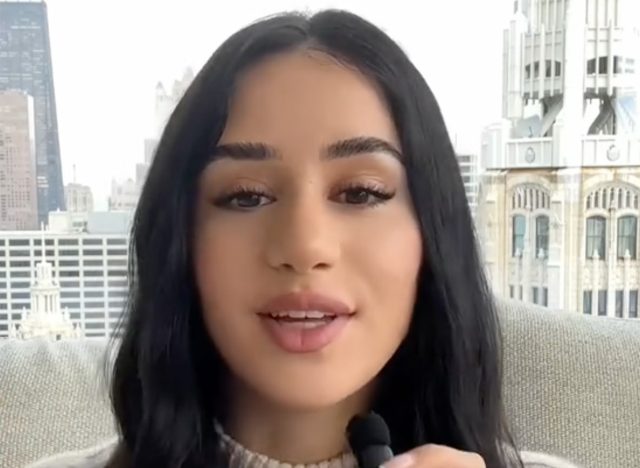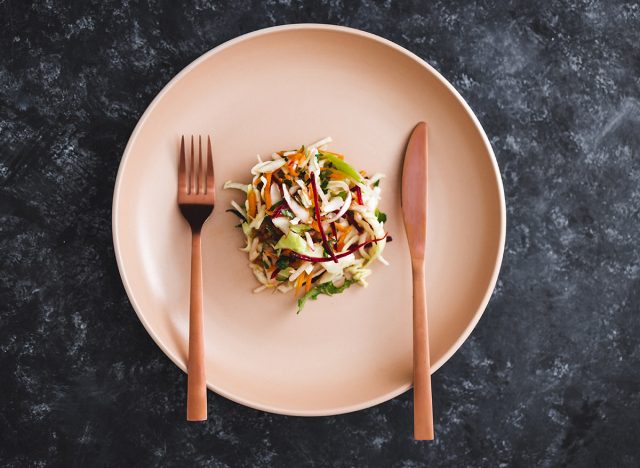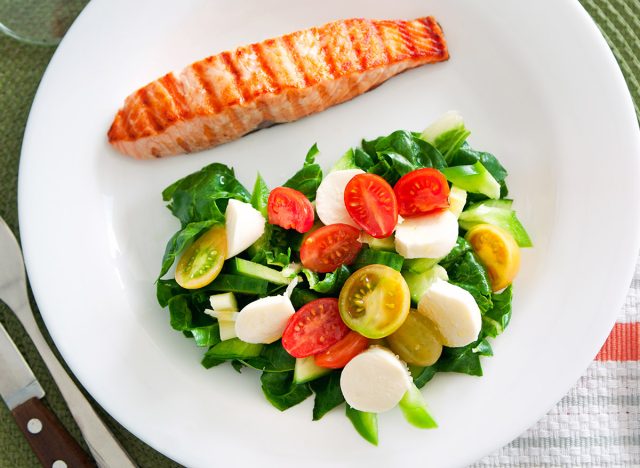#1 Thing You Can Do to Lose Weight at Your Next Meal, According to a Dietitian
Samar Kullab MS, RDN (@chicagodietician) is a Licensed & Registered Dietitian Nutritionist and influencer who has amassed a following of over 710,000 followers on TikTok. She regularly shares tips and tricks about how to lose weight in a natural way. In one viral video, she shares a simple hack you can use at every meal to eat less. "One thing you can do at your next meal to help you lose weight. I'm a registered dietician nutritionist with a master's in nutrition science. So listen up," she says in the clip. We also asked The Diet Diva, Tara Collingwood, MS, RDN, CSSD, LD/N, ACSM-CPT, a Board Certified Sports Dietitian, for more tips.
Don't Eat Fast
@chicago.dietitian Follow for more weight loss tips☺️ #dietitian #nutrition #weightlossmotivation #weightlosstipsandtricks #learnontiktok ♬ original sound – Samar Kullab MS, RDN
Like your mother might have told you, don't eat so fast, she says. "Slow down at your meal. It takes 20 minutes for your stomach to signal your brain that you are full."
If You Eat Fast, You Won't Know When You Are Full

This means that if you eat fast, you are more likely to eat more because you won't know you are full. "So the quicker that you eat, the more that you can eat."
Once you figure it out, it will be too late. "By the time your brain gets that message, you're just like, 'Well, I'm uncomfortably full,''" she adds.
At your next meal, "slow down, chew your food very well, put your utensils down between each bite," she instructs.
Related: Britany Williams Shares 10-Minute, Zero Equipment Beginner Workout
Eat From Smaller Plates

We also asked The Diet Diva, Tara Collingwood, MS, RDN, CSSD, LD/N, ACSM-CPT, a Board Certified Sports Dietitian, for more tips. Her first? Eat from a smaller plate. "If you eat from the really large dinner plates, smaller portions look like you are depriving yourself and it's too easy to put portions too large on those plates," she says. "If you fill a smaller plate, you can eat smaller portions."
Related: I Lost 30 Pounds With This Walking Routine
Half Your Plate with Veggies and One-Quarter, Veggies

Collingwood also suggests filling half your plate with veggies and at least one-quarter with protein. "Veggies are low in calories and high in fiber which fills and keeps you satiated. Protein is also very satiating and has a high thermic effect of food, meaning you actually burn more calories digesting it than carbs and even fat."
💪🔥Body Booster: During your next meal, be intentional about your pace of eating. Try and eat slower than usual, giving your stomach a chance to signal to your brain that you are full. And if you enjoyed this article, take advantage of these 15 Quick Ways to Lose Body Fat Percentage in a Week.





